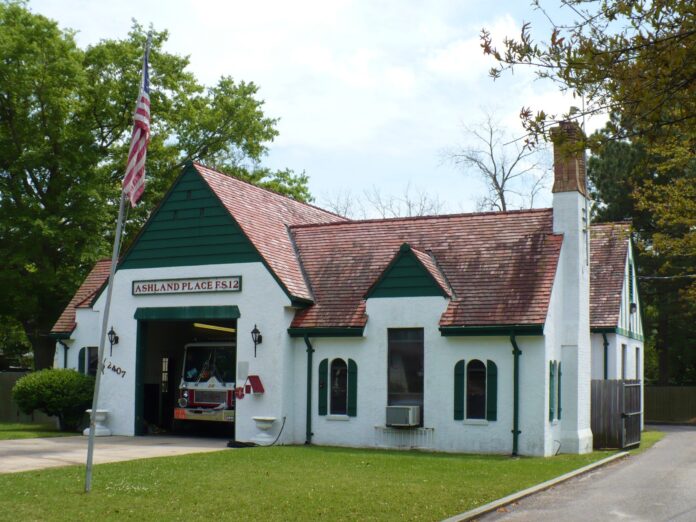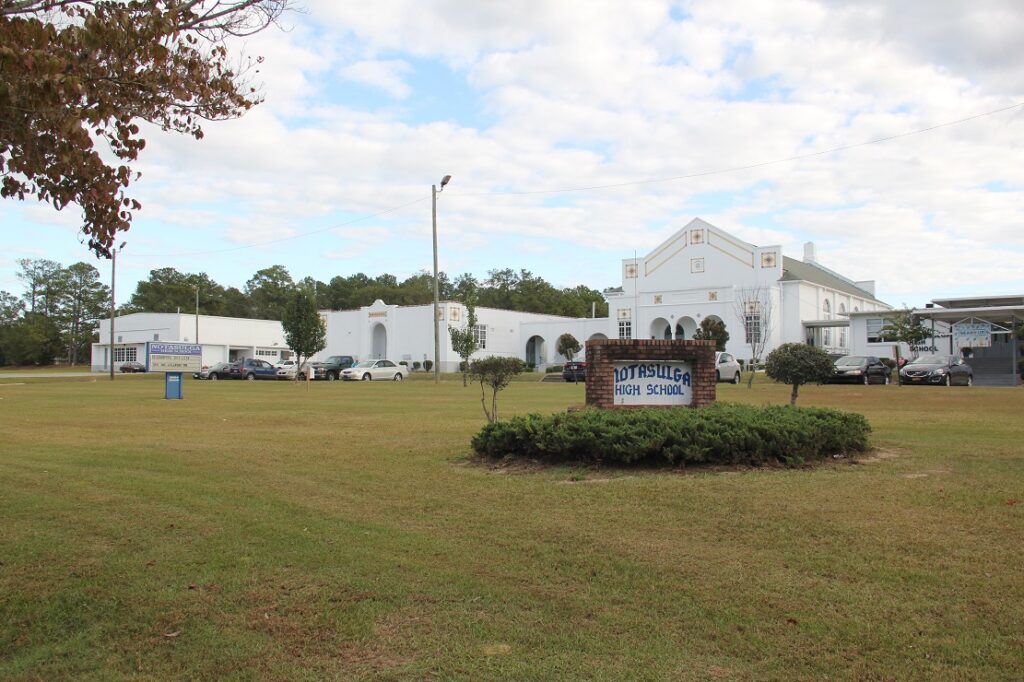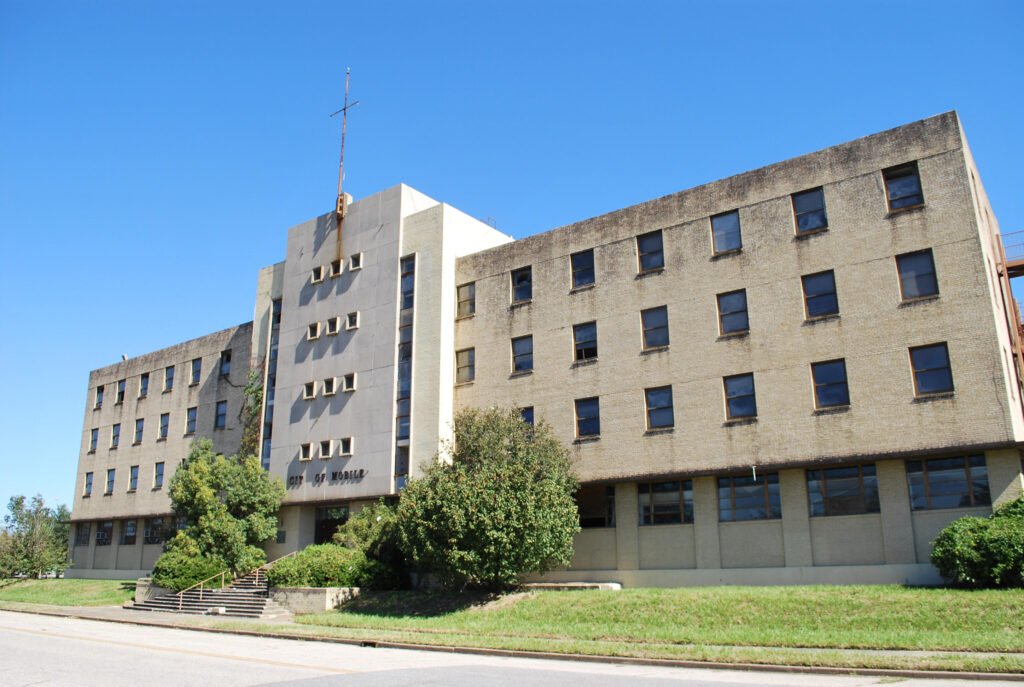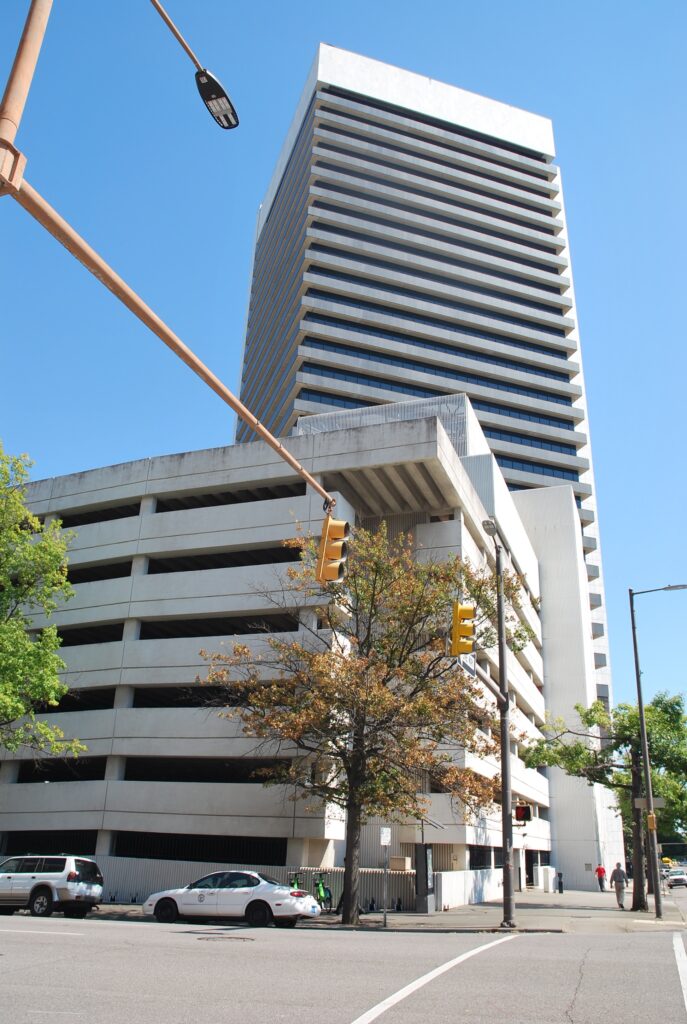
MONTGOMERY, Ala. – The Alabama Historical Commission, the State Historic Preservation Office, is pleased to announce that four Alabama properties have been added to the National Register of Historic Places: Macon County High School in Notasulga; Mobile Seamen’s Club Building in Mobile; South Central Bell Building (AT&T City Center) in Birmingham; and Ashland Place Fire Station in Mobile.
The National Register of Historic Places is the nation’s official list of cultural resources, worthy of preservation. Authorized under the National Historic Preservation Act of 1966, the National Register is part of a nationwide program to coordinate and support public and private efforts to identify, evaluate, and protect our historic and archaeological places. Properties listed in the NR include districts, sites, buildings, structures, and objects that are significant in American history, architecture, archaeology, engineering, and culture at the local, state, and/or national level. Alabama has more than 1,250 properties in the National Register.
“Through the advocacy of citizens and the Alabama Historical Commission, we hope these cultural resources and their legacies remain for generations to come. National Register properties in Alabama tell an incredibly rich and diverse story of how our citizens and state have changed the world,” said State Historic Preservation Officer and Executive Director of the Alabama Historical Commission Lisa D. Jones.
Macon County High School, 500 East Main Street, Notasulga, Macon County
Known as Notasulga High School since the early 1970s, Macon County High School’s history illustrates the profound changes taking place in public education in the American South during the 1960s and 1970s, particularly the process of integration. Events, students, and faculty at the school during its period of significance are directly associated with Lee v. Macon County Board of Education (1963-2006), the nationally significant landmark Civil Rights case that set a precedent for an enhanced role for the federal government in the desegregation of local schools through judicial relief, direct on-ground intervention, and compliance monitoring.
The legal battle that spawned Lee v. Macon County began with the U.S. Supreme Court’s landmark 1954 Brown v. Board of Education decision, which declared unconstitutional all state laws mandating separate public schools for black and white students. On January 28, 1963, attorney Fred Gray filed suit on behalf of eight families, including brothers Anthony and Henry Lee, to force the Macon County Board of Education to desegregate the county schools. White resistance to desegregation came to a head at a dramatic stand-off at Macon County High School, when the Mayor of Notasulga refused to allow six Black students to enter the school, while state police cars dispatched by Governor George Wallace lined the street.
The initial 1963 lawsuit was expanded to include the Alabama State Board of Education. In 1964, federal Judges, including Frank M. Johnson, ordered the State of Alabama to stop supporting segregated schools. The decision was upheld by the U.S. Supreme Court in Wallace v. United States, making a blueprint for school desegregation across the country.
Lee v. Macon County Board of Education is also significant in that it replaced the necessity of addressing integration school district by school district with a statewide approach and grew in scope to affect other education-related institutions. Macon County High School received nationwide and international attention as a model example of successful integration in the late 1960s and 1970s.
Mobile Seamen’s Club Building, 350 St. Joseph Street, Mobile, Mobile County
The Mobile Seamen’s Club was established in the 19th century to provide safe lodging and religious and moral instruction to the men who worked on the many ships that passed through the port in Mobile. The building was completed in 1949 and was designed by Mobile, AL architect John Platt Roberts whose legacy includes UMS-Wright and Mobile Infirmary.
The history of the site illustrates the expansion of the shipping industry in Mobile after World War II, which increased the number of seamen passing through Mobile. The Seafarer’s International Union and the Waterman Steamship Company supported the construction of the Mobile Seamen’s Club Building, reflecting the increased involvement of labor unions and employers in providing lodging, recreation, and support services for local seamen.
The City of Mobile purchased the building in 1982, using it for office space, and it was known as City Hall North for nearly 20 years. Developers are renovating the building to become an apartment complex.
The Mobile Seamen’s Club Building is architecturally significant as an early example of Modern architecture in downtown Mobile and as an important example of the work of local architect John Platt Roberts. Echoes of the building’s design are evident in Platt’s later work.
South Central Bell Building (AT&T City Center) 600 19th Street North Birmingham, Jefferson County
The AT&T City Center is a 30-story, 390-foot office building in Birmingham, Alabama. Completed in 1971, it was originally known as the South Central Bell Building, designed by Der Scutt from the New York firm Kahn and Jacobs. It served as the corporate headquarters for South Central Bell and its five-state operating territory.
The building was renamed the BellSouth City Center after Brasfield & Gorrie completed an $80 million renovation in 1988. BellSouth was purchased by AT&T in 2006, and the building’s name was changed to AT&T City Center. As AT&T’s corporate structure shifted, the company moved all its employees out of the building by March 2018. New owners purchased the building soon after and are currently developing it as a mixed-use space, combining residential, office, and restaurant.
The South Central Bell Building is historically significant “as a symbol of Birmingham’s rebirth as an urban center in the New South.” The company’s move to Birmingham was an important event in the city’s emergence as a regional hub for business and its efforts to repair the city’s image after the violence of the Civil Rights Movement.
It is locally significant example of an International Style skyscraper in Birmingham that reflected national trends in skyscraper design.
Firehouse No. 12 (Ashland Place Fire Station) Old Shell Road, Mobile, Mobile County
A boundary increase to the Midtown Historic District in Mobile added the Ashland Place Fire Station to the National Register-listed historic district. The small fire station on Old Shell Road was constructed in 1930, not long after the area was brought into the city limits. The fire station was built to serve the growing number of houses and residents in the neighborhoods that would later form the Midtown Historic District and was one of the first fire stations in the city to be built for motorized rather than horse-drawn firefighting vehicles. Built in the Tudor Revival style, the fire station is architecturally similar to other resources in the Midtown Historic District.
For more information about the National Register, or to learn how to begin the process of nominating a property, visit www.ahc.alabama.gov.
























